饒毅評(píng)楊輝事件:中國(guó)“無(wú)科研造假”元年,但愿“空前”也是“絕后”
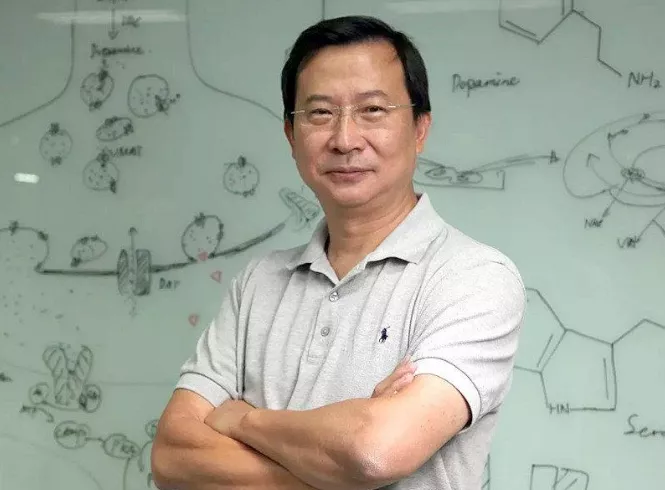
2013 年,中科院神經(jīng)科學(xué)研究所研究員楊輝以第一作者身份于《細(xì)胞》(Cell)發(fā)表題為“One-Step Generation of Mice Carrying Reporter and Conditional Alleles by CRISPR/Cas-Mediated Genome Engineering”的論文,報(bào)告了一種利用 2 個(gè) Cas9 mRNA 和 2 個(gè) sgRNA、通過“雙供體”法創(chuàng)建轉(zhuǎn)基因小鼠的新技術(shù),并表示該技術(shù)條件敲除等位基因的效率高達(dá) 16%,相較其他方法有明顯提升,在業(yè)內(nèi)引發(fā)震動(dòng)。
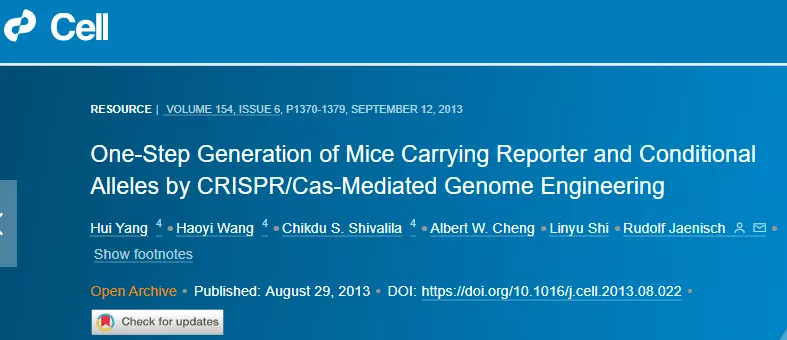
6 年后的2019年,來(lái)自全球 七個(gè)國(guó)家、三十幾個(gè)大學(xué)、逾百位科學(xué)家聯(lián)合發(fā)表論文(美國(guó)內(nèi)布拉斯加大學(xué)教授 Channabasavaiah B. Gurumurthy 為第一作者),指出根據(jù)楊輝等人 2013 年提出的雙供體法進(jìn)行重復(fù)后,無(wú)法復(fù)現(xiàn)其 16% 的成功率。
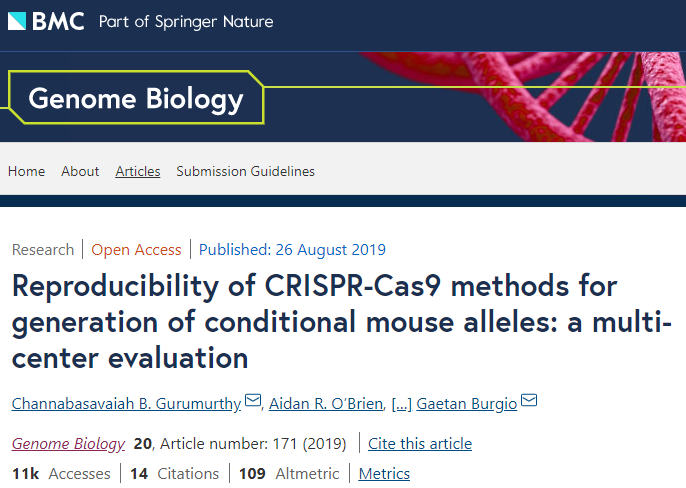
2021 年 4 月 7 日,楊輝等通過 Genome Biology 發(fā)文回復(fù)上述質(zhì)疑,指出已有其他團(tuán)隊(duì)可成功重復(fù)該方法,效率從 2.5% 到 18% 不等。還表示:重復(fù)實(shí)驗(yàn)時(shí)的方法以及試劑濃度都不同,導(dǎo)致了實(shí)驗(yàn)無(wú)法重復(fù)。
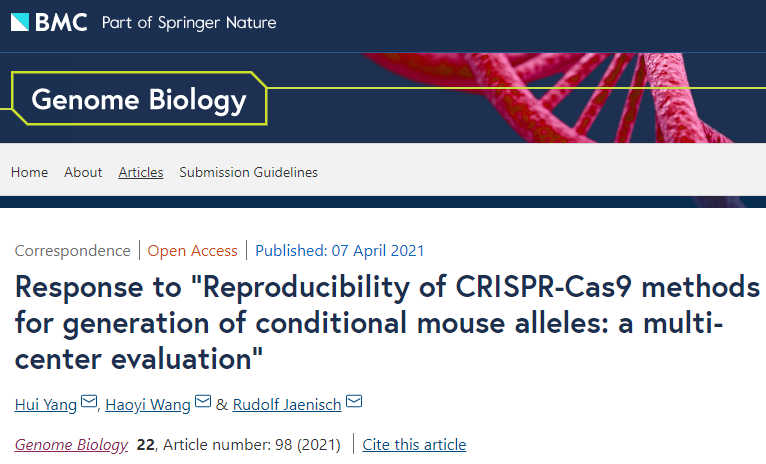
同日(4月7日),Gurumurthy 等人隨即回應(yīng)楊輝,指出:合作團(tuán)隊(duì)內(nèi)的所有實(shí)驗(yàn)室都沒人能達(dá)到 16% 的效率,而且 2013 年的 Cell 論文沒有公布試劑的使用濃度等細(xì)節(jié),曾經(jīng)嘗試聯(lián)系作者但未得到回應(yīng)。
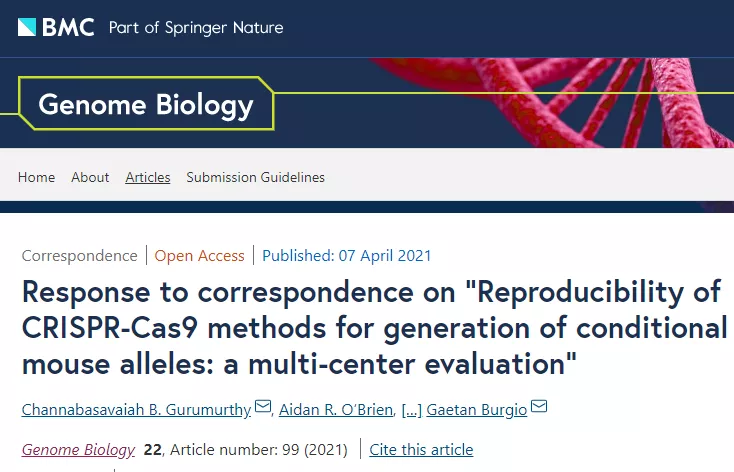
4月9日,首都醫(yī)科大學(xué)校長(zhǎng)饒毅在其個(gè)人公眾號(hào)“饒議科學(xué)”發(fā)表署名“活見久”,題為《中國(guó)“無(wú)科研造假”元年:但愿“空前”也是“絕后”》文章,鮮明的表明了自己的態(tài)度,全文如下:

中國(guó)“無(wú)科研造假”元年:但愿“空前”也是“絕后”
雖然2019年底中國(guó)國(guó)家希望嚴(yán)肅查處科研領(lǐng)域的學(xué)術(shù)不端,2020年卻有人欺上瞞下、玩忽職守,在2021年推出兩條震撼學(xué)術(shù)界的論調(diào):
一是大家眾目睽睽之下的圖片造假鐵證,被國(guó)際上學(xué)術(shù)不入流、在國(guó)內(nèi)能玩江湖把戲的人,化解為“圖片誤用”。
二是不懂科學(xué)的小官僚有點(diǎn)芝麻大的權(quán)力就認(rèn)為自己可以公然宣稱科學(xué)實(shí)驗(yàn)不用重復(fù)。
如果這兩條成為中國(guó)評(píng)判科研學(xué)術(shù)不端的標(biāo)準(zhǔn),那么中國(guó)就再無(wú)科學(xué)研究不端的可能性,有不端也可以同樣輕易化解。
2021年就有成為中國(guó)無(wú)科研造假元年的危險(xiǎn)。這種危險(xiǎn),對(duì)中國(guó)、中國(guó)人民都是危害,只有利于把中國(guó)高尚的科學(xué)變成低級(jí)趣味江湖的小人。
有人假惺惺建議,學(xué)術(shù)批評(píng)只能在英文學(xué)術(shù)刊物進(jìn)行,不能有中文文章。其實(shí),這種人的多數(shù)(但非百分之百)是寄希望中國(guó)大多數(shù)人不讀英文,只有英文批評(píng)就可以溜過去。
考驗(yàn)這些人的時(shí)間來(lái)了:七個(gè)國(guó)家、三十幾個(gè)大學(xué)、逾百位科學(xué)家一而再地嚴(yán)重質(zhì)疑同一篇文章,在中國(guó),會(huì)得到嚴(yán)肅調(diào)查、嚴(yán)格處理嗎?
答案,恐怕很不確定。
元年剛被宣布中國(guó)無(wú)造假,笑話又來(lái)了,雖然可能是黑色笑話。
2021年4月7日,美國(guó)、英國(guó)、澳大利亞、日本、加拿大、比利時(shí)、捷克等7個(gè)國(guó)家、三十幾個(gè)大學(xué)、逾百位科學(xué)家(包括華裔科學(xué)家)發(fā)表文章,再次批駁中國(guó)科學(xué)院上海神經(jīng)科學(xué)研究所楊輝研究員與2013年發(fā)表的《細(xì)胞》論文。
簡(jiǎn)而言之,2013年楊輝的論文普遍不能被重復(fù)。
科學(xué)界常常就算了,沒有人糾結(jié)這種。
但是,可能是因?yàn)楸焕速M(fèi)時(shí)間和資源太多而氣不過,一些科學(xué)家義憤填膺聯(lián)合執(zhí)筆于2019年發(fā)表批評(píng)2013年論文。2021年楊輝發(fā)表對(duì)批評(píng)的反駁。2021年這些科學(xué)家再反駁。
活的太久了,沒有見過七個(gè)國(guó)家、三十幾個(gè)大學(xué)、超過百位科學(xué)家反復(fù)質(zhì)疑同一篇文章。
這位楊輝,2020年4月在《細(xì)胞》還有一篇文章,被加州大學(xué)付向東教授質(zhì)疑是偷付向東實(shí)驗(yàn)室的想法,而這篇文章最近也被哈佛大學(xué)、霍普金斯大學(xué)的著名美國(guó)教授懷疑,并有多位華人教授質(zhì)疑可靠性
(見:https://mp.weixin.qq.com/s/AIdZ7k3dm8AlQZB0WFyi9A)。
但愿中國(guó)人的科研文章被“七個(gè)國(guó)家、三十幾個(gè)大學(xué)、超過百位科學(xué)家反復(fù)質(zhì)疑”只有這空前的一次,而絕后。
楊輝的文章和批評(píng)文章,批評(píng)楊輝的科學(xué)家名單:
Yang H, Wang H, Shivalila CS, Cheng AW, Shi L, Jaenisch R (2013) One-step generation of mice carrying reporter and conditional alleles by CRISPR/Cas-mediated genome engineering. Cell154:1370-1309. https://doi.org/10.1016/j.cell.2013.08.022.
Gurumurthy CB, O'Brien AR, Quadros RM, Adams J Jr, Alcaide P, Ayabe S, Ballard J, Batra SK, Beauchamp MC, Becker KA, et al. (2019) Reproducibility of CRISPR-Cas9 methods for generation of conditional mouse alleles: a multi-center evaluation. Genome Biology20:171. https://doi.org/10.1186/s13059-019-1776-2.
Yang H, Wang H, Jaenisch R (2021) Response to “Reproducibility of CRISPR-Cas9 methods for generation of conditional mouse alleles: a multi-center evaluation”。 Genome Biology 22:98.
Gurumurthy, C.B., O'Brien, A.R., Quadros, R.M. et al. (2021) Response to correspondence on “Reproducibility of CRISPR-Cas9 methods for generation of conditional mouse alleles: a multi-center evaluation”。 Genome Biology 22:99
1. Mouse Genome Engineering Core Facility, Vice Chancellor for Research Office, University of Nebraska Medical Center, Omaha, NE, USA
Channabasavaiah B. Gurumurthy, Rolen M. Quadros & Donald W. Harms
2. Developmental Neuroscience, Munroe Meyer Institute for Genetics and Rehabilitation, University of Nebraska Medical Center, Omaha, NE, USA
Channabasavaiah B. Gurumurthy
3. Transformational Bioinformatics, Health and Biosecurity Business Unit, CSIRO, Sydney, Australia
Aidan R. O'Brien
4. Department of Immunology and Infectious Disease, the John Curtin School of Medical Research, The Australian National University, Canberra, Australia
Aidan R. O'Brien, Jing Gao, Nay-Chi Khin, Jenna Lowe, Nikki Ross, Lora Starrs & Gaetan Burgio
5. Texas A&M Institute for Genomic Medicine (TIGM), Texas A&M University, College Station, TX, 77843, USA
John Adams Jr, Johnathan Ballard, Amy Gonzales, Huiping Guo, Benjamin Morpurgo & Andrei Golovko
6. Department of Immunology, Tufts University School of Medicine, Boston, USA
Pilar Alcaide, Francisco Carrillo-Salinas & Ane M. Salvador
7. RIKEN BioResource Research Center, Tsukuba, Ibaraki, 305-0074, Japan
Shinya Ayabe, Mizuho Iwama, Koji Nakade, Toshiaki Nakashiba, Kenichi Nakashima, Yuichi Obata & Atsushi Yoshiki
8. Department of Biochemistry and Molecular Biology, University of Nebraska Medical Center, Omaha, NE, USA
Surinder K. Batra, Imayavaramban Lakshmanan & Moorthy P. Ponnusamy
9. Departments of Anatomy and Cell Biology, Human Genetics and Pediatrics, Research Institute McGill University Health Center (RI-MUHC), Montreal, Canada
Marie-Claude Beauchamp, Wesley Chan, Loydie Jerome-Majeweska & Sabrina Shameen Alam
10. Maine Medical Center Research Institute (MMCRI), Scarborough, ME, USA
Kathleen A. Becker, Victoria DeMambro, Anyonya Guntur, Anne Harrington, Michelle Karolak, Volkhard Lindner, Katherine Motyl, Leif Oxburgh, Ilka Pinz, Clifford J. Rosen, Larisa Ryzhova & Lucy Liaw
11.Transgenesis and Animal Modeling Core Facility, Centre de Recherche du Centre Hospitalier Universitaire de Montreal (CRCHUM), Montreal, Canada
Guillaume Bernas, Mariette Ouellet & Jean-Francois Schmouth
12. Division of Neuroscience and Experimental Psychology, School of Biological Sciences, Faculty of Biology, Medicine and Health, Manchester Academic Health Science Centre, University of Manchester, AV Hill Building, Oxford Road, Manchester, M13 9PT, UK
David Brough & Catherine B. Lawrence
13. School of Medicine, Indiana University, Indianapolis, IN, 46202, USA
Hanying Chen
14. South Australian Health & Medical Research Institute and Department of Medicine, University of Adelaide, Adelaide, Australia
Ruby Dawson, Sandra Piltz & Paul Thomas
15. Transgenic mouse core facility, VIB Center for Inflammation Research, Ghent, Belgium
Jinke D'Hont, Katrien Staes, Leen Vanhoutte, Frederique Vanrockeghem & Tino Hochepied
16. Department of Biomedical Molecular Biology, Ghent University, Ghent, Belgium
Jinke D'Hont, Katrien Staes, Leen Vanhoutte, Frederique Vanrockeghem & Tino Hochepied
17. Unit of Cardiac Physiology, School of Medical Sciences, Manchester Academic Health Science Center, University of Manchester, Manchester, UK
Katharine Dibb & Andrew Trafford
18. High-Throughput DNA Sequencing and Genotyping Core Facility, Vice Chancellor for Research Office, University of Nebraska Medical Center, Omaha, USA
James D. Eudy & Ronald J. Redder
19. University of Rochester Medical Center, Rochester, NY, 14642, USA
Lin Gan & Joseph M. Miano
20.Division of Evolution and Genomic Sciences, School of Biological Sciences, Faculty of Biology, Medicine and Health, Manchester Academic Health Science Centre, University of Manchester, Manchester, UK
Kathryn E. Hentges
21. Transgenic Unit core facility, Faculty of Biology, Medicine and Health, University of Manchester, Manchester, UK
Neil Humphreys & Antony D. Adamson
22.Department of Basic Medicine, Division of Basic Medical Science and Molecular Medicine, School of Medicine, Tokai University, 143, Shimokasuya, Isehara, Kanagawa, 259-1193, Japan
Shiho Imai & Taiji Matsusaka
23.Department of Medical Data Science, Osaka University Graduate School of Medicine, Suita, Japan
Hideshi Ishii
24.The University of Texas, MD Anderson Cancer Center, Houston, TX, USA
Eric Jonasch, Xian-De Liu, Chad Smith, Xuesong Zhang & Jan Parker-Thornburg
25.Division of Cardiovascular Sciences, School of Medical Sciences, Faculty of Biology, Medicine and Health, The University of Manchester AND Manchester Heart Centre, Manchester University NHS Foundation Trust, Manchester Academic Health Science Centre, Manchester, UK
Bernard Keavney
26.Department of Frontier Science for Cancer and Chemotherapy, Osaka University Graduate School of Medicine, Osaka, Japan
Masamitsu Konno
27.The Institute of Experimental Animal Sciences, Osaka University Graduate School of Medicine, Osaka, Japan
Yuko Kotani, Yayoi Kunihiro, Yoshiki Miyasaka, Yoshihiro Uno, Yuko Yamauchi, Kazuto Yoshimi & Tomoji Mashimo
28.Centre de Recherche du Centre Hospitalier Universitaire de Montreal (CRCHUM), Montreal, Canada
Catherine Larochelle
29.Children's Research Institute Mouse Genome Engineering Core, University of Texas Southwestern Medical Center, Dallas, TX, 75390, USA
Lin Li, Yu Zhang & Hao Zhu
30.Manchester Collaborative Centre for Inflammation Research (MCCIR), School of Biological Sciences, Faculty of Biology, Medicine and Health, The University of Manchester, Manchester, UK
Gloria Lopez-Castejon
31. Centre for Biological Timing, School of Medical Sciences, Faculty of Biology, Medicine and Health, University of Manchester, Manchester, UK
Andrew Loudon
32.Center for Matrix Biology and Medicine, Graduate School of Medicine, Tokai University, Isehara, Kanagawa, 259-1193, Japan
Hiromi Miura & Masato Ohtsuka
33.Department of Molecular Life Science, Division of Basic Medical Science and Molecular Medicine, School of Medicine, Tokai University, 143, Shimokasuya, Isehara, Kanagawa, 259-1193, Japan
Hiromi Miura & Masato Ohtsuka
34.Laboratory of Molecular Life Science, Foundation for Biomedical Research and Innovation, Kobe, Japan
Yo-ichi Nabeshima
35.Department of Laboratory Animal Science, Support Center for Medical Research and Education, Tokai University, 143, Shimokasuya, Isehara, Kanagawa, 259-1193, Japan
Sanae Ogiwara
36.Oxford Centre for Diabetes, Endocrinology and Metabolism, University of Oxford, Oxford, OX37LE, UK
David Ray
37.Mouse Biology Program, University of California, Davis, USA
Mark T. Ruhe, Brandon J. Willis, K. C. Kent Lloyd & Joshua A. Wood
38.Laboratory of Transgenic Models of Diseases and Czech Centre for Phenogenomics, Institute of Molecular Genetics of the Czech Academy of Sciences, Prague, Czech Republic
Radislav Sedlacek & Petr Kasparek
39.College of Osteopathic Medicine, Marian University, Indianapolis, IN, 46222, USA
Karan Sharma
40.Laboratory Animal Resource Center, University of Tsukuba, Tsukuba, Japan
Fumihiro Sugiyama, Satoru Takahashi & Seiya Mizuno
41. Department of Gastroenterology and Metabolism, Nagoya City University Graduate School of Medical Sciences, Nagoya, Japan
Tomohiro Tanaka
42.Department of Physical Therapy, School of Health and Human Sciences, Indiana University, Indianapolis, IN, 46202, USA
Christian S. Wright, Xin Yi & William R. Thompson
43.Lillehei Heart Institute Regenerative Medicine and Sciences Program, University of Minnesota, Minneapolis, MN, USA
Satyabrata Das & Daniel J. Garry
44.Paul and Sheila Wellstone Muscular Dystrophy Center, University of Minnesota, Minneapolis, MN, USA
Daniel J. Garry
45.Department of Surgery, School of Medicine, University of California, Davis, Davis, USA
K. C. Kent Lloyd
46.McGill Integrated Core for Animal Modeling (MICAM), Montreal, Canada
Mitra Cowan
免責(zé)聲明:本網(wǎng)站所轉(zhuǎn)載的文字、圖片與視頻資料版權(quán)歸原創(chuàng)作者所有,如果涉及侵權(quán),請(qǐng)第一時(shí)間聯(lián)系本網(wǎng)刪除。
-
標(biāo)簽: 中科院神經(jīng)科學(xué)研究所, 楊輝, “雙供體”法
相關(guān)文章

官方微信
《中國(guó)腐蝕與防護(hù)網(wǎng)電子期刊》征訂啟事
- 投稿聯(lián)系:編輯部
- 電話:010-62316606-806
- 郵箱:fsfhzy666@163.com
- 中國(guó)腐蝕與防護(hù)網(wǎng)官方QQ群:140808414
文章推薦
點(diǎn)擊排行
PPT新聞
“海洋金屬”——鈦合金在艦船的
點(diǎn)擊數(shù):7130
腐蝕與“海上絲綢之路”
點(diǎn)擊數(shù):5741





